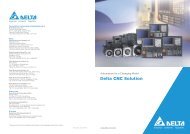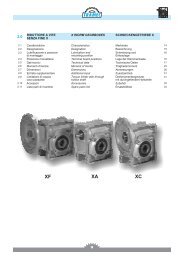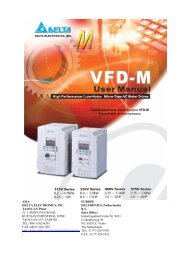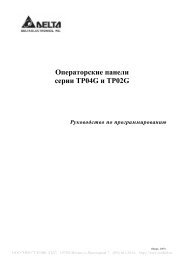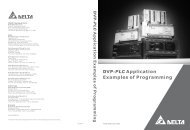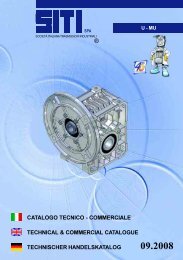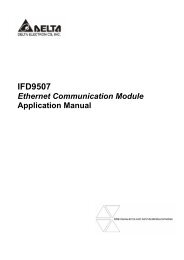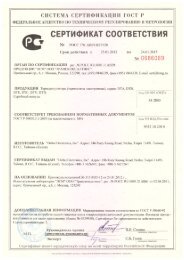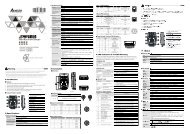Medium Voltage Application Guide
Medium Voltage Application Guide
Medium Voltage Application Guide
Create successful ePaper yourself
Turn your PDF publications into a flip-book with our unique Google optimized e-Paper software.
ELECTRICAL SUPPLY<br />
Glass fiber and plastic material shall withstand the operating temperatures and exposure to sunlight.<br />
Appropriate measures shall be taken to prevent chemical deterioration of the contact surfaces.<br />
MV SWITCHBOARD<br />
1. The “metal enclosed” MV Switchboard under this contract shall comprise the panels as shown<br />
on the drawings and / or schedules.<br />
2. The switchboard shall comply with the latest issue of IEC 62271-1 and IEC 62271-200 and with<br />
the nominated IP rating against the external environment<br />
3. The switchboard shall be of the modular “metal enclosed” floor mounted, extensible type<br />
equipped with circuit breakers, busbars. instruments. relays and all accessories as is described<br />
in the specifications hereinafter and the Drawings.<br />
4. All cubicles shall be of standard pattern and dimensions, robust in construction; dust and vermin<br />
proof. and suitable for indoor use. The design of the cubicles and associated equipment shall be<br />
such as to enable extensions to be made at either end.<br />
5. The switchboard cubicles shall have separate compartments for the switchgear, busbars, cable<br />
termination, relays and controls. The compartment shall restrict access to that area described<br />
above only.<br />
6. Pressure relief flaps shall be provided on the top of each HV cubicle to relief excess pressure<br />
deeming an internal fault.<br />
7. All circuit breakers or contactors shall be of the withdrawable isolating type. with the trucks<br />
identical and interchangeable in every switchgear cubicle. A positive guide shall be provided for<br />
the truck entry into the cubicle and clear indications given when the truck is at the engaged<br />
position.<br />
3.5 Busbar System<br />
1. Busbars and electrical connections between pieces of apparatus shall be of electrolytic copper<br />
and shall be sufficiently insulated from earth and from each other to withstand the specified high<br />
voltage tests.<br />
2. Busbars shall be air-insulated. All busbars shall be suitable for normal operations at rated<br />
voltage, conditions and working environment without secondary insulation. The busbars,<br />
connections and their insulated supports shall be of approved construction, mechanically strong,<br />
and shall withstand all the stresses which may be imposed upon them due to fixing, vibration,<br />
fluctuations in temperature, short circuits or other causes.<br />
3. The busbars shall be so arranged that they may be extended in length without difficulty.<br />
Connections shall be kept as short and straight as possible, and any joints shall not increase the<br />
resistance of the connection. When dissimilar metals are connected, approved means shall be<br />
provided to prevent electro-chemical corrosion.<br />
4. The busbars and connections shall be so arranged and supported that under no circumstances,<br />
including short circuit conditions, can the clearances from earthed metalwork or other conductors<br />
be less than the distances required in the standards.<br />
3.6 Circuit Breakers<br />
1. CB’s shall be Vacuum type for new MV Switchboards. CB’s must comply with IEC 62271-100.<br />
2. The CB breaking capacity shall be equal to, or greater than the busbar Isc.<br />
3. The circuit breaker shall be of the trip free, vertical or horizontal isolation, horizontal drawout<br />
carriage mounted type. The number of electrical and mechanical operations must be stated.<br />
4. The various parts of the circuit breaker shall be of substantial construction, carefully fitted to<br />
reduce mechanical shock during operation to a minimum and to prevent inadvertent operation<br />
due to vibration or other causes.<br />
5. The circuit breaker shall be arranged for trip free, independent manual operation.<br />
6. The CB method of operation to be provided as part of the submission.<br />
7. The circuit breakers shall have been subjected to impulse voltage tests for the rated voltage.<br />
8. The circuit breaker shall be provided with automatic locking devices to lock the movable portion<br />
of the unit in either the 'engaged' or fully 'isolated' position, The interlocking mechanisms shall be<br />
provided to satisfy the following requirements:<br />
6






